Picea Mariana (Black Spruce) and Larix Laricina (Tamarack) Collected Fall 2021. SPRING UPDATE *Larix pushing new needles!*
4 posters
Page 1 of 1
 Picea Mariana (Black Spruce) and Larix Laricina (Tamarack) Collected Fall 2021. SPRING UPDATE *Larix pushing new needles!*
Picea Mariana (Black Spruce) and Larix Laricina (Tamarack) Collected Fall 2021. SPRING UPDATE *Larix pushing new needles!*
Hi everyone.
Life has finally given me an opportunity to practice Bonsai, so I'm diving in after over a decade of reading and dreaming.
In the past I've experimented with overwintering trees in pots with success. But those trees were of little value as far as Bonsai is concerned and were never going to be styled in the first place. These trees will be my first true effort, and I'm very much looking forward to it.
Last fall, I collected some trees from the wild. I live in the Subarctic in Canada, so the fall is an ideal time for me to collect. Snow still covers much of the ground in spring, and the buds are all open on the trees by the time I can access areas if interest. Our growing season is very short, and the snow crushes things down for most of the year. As a result even smaller trees develop very interesting character.
The Trees:
A Tamarack Clump (Larix Laricina): Very good root system with only a single tap root holding it down! It came out so easily I mostly just used my hands to gently free up the roots underneath. The whole thing came out together. The ground is mostly sand, and so roots tend to grow laterally into the decomposed organic material on top of it. This is probably due to the fact that there is very little oxygen in the compacted sand, so roots don't grow there.
I'll only show the collection process for this tree since the routine is pretty identical for all the trees I collected.
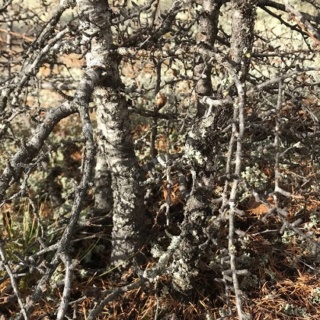
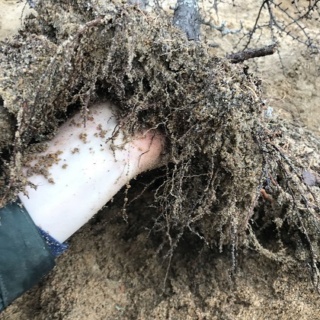
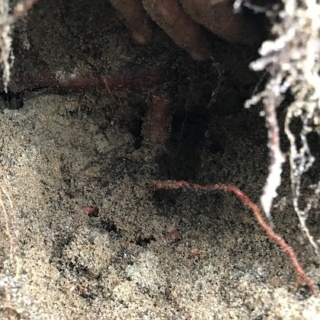
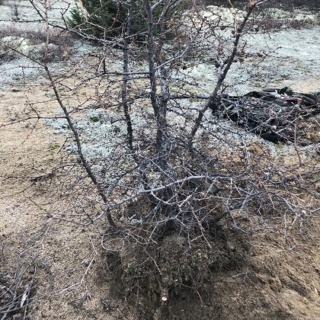
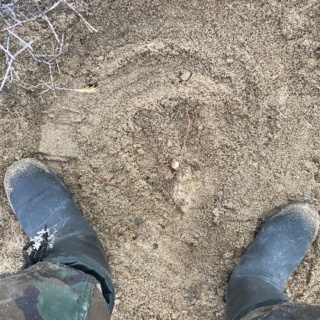
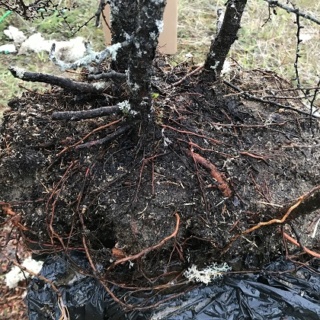
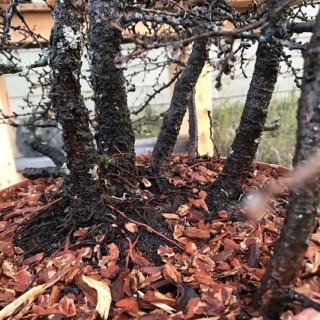
Some Black Spruce, and a few Aspens for an experiment:
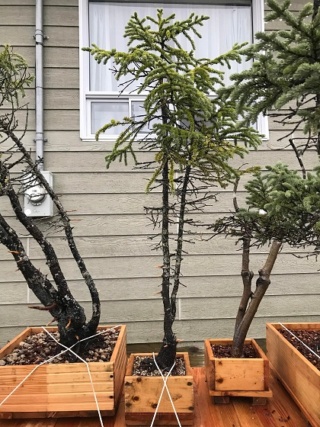
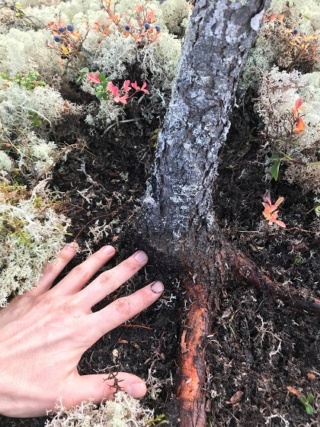
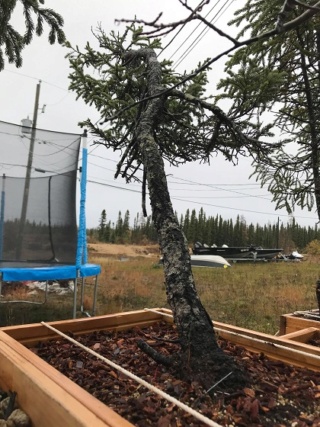

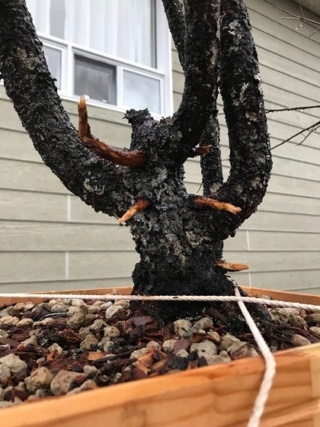

Buried in snow for the winter: This photo was taken earlier this season but as of right now they are 100% covered with snow. Overwintering trees is not complicated if you use species which thrive in your particular climate. No greenhouse needed. Just snow and a little protection from the wind.

For better or worse I'll be updating this topic as the trees progress. I'll also post pictures of new trees I find.
Life has finally given me an opportunity to practice Bonsai, so I'm diving in after over a decade of reading and dreaming.
In the past I've experimented with overwintering trees in pots with success. But those trees were of little value as far as Bonsai is concerned and were never going to be styled in the first place. These trees will be my first true effort, and I'm very much looking forward to it.
Last fall, I collected some trees from the wild. I live in the Subarctic in Canada, so the fall is an ideal time for me to collect. Snow still covers much of the ground in spring, and the buds are all open on the trees by the time I can access areas if interest. Our growing season is very short, and the snow crushes things down for most of the year. As a result even smaller trees develop very interesting character.
The Trees:
A Tamarack Clump (Larix Laricina): Very good root system with only a single tap root holding it down! It came out so easily I mostly just used my hands to gently free up the roots underneath. The whole thing came out together. The ground is mostly sand, and so roots tend to grow laterally into the decomposed organic material on top of it. This is probably due to the fact that there is very little oxygen in the compacted sand, so roots don't grow there.
I'll only show the collection process for this tree since the routine is pretty identical for all the trees I collected.







Some Black Spruce, and a few Aspens for an experiment:






Buried in snow for the winter: This photo was taken earlier this season but as of right now they are 100% covered with snow. Overwintering trees is not complicated if you use species which thrive in your particular climate. No greenhouse needed. Just snow and a little protection from the wind.

For better or worse I'll be updating this topic as the trees progress. I'll also post pictures of new trees I find.
Last edited by JPH on Thu May 19, 2022 10:50 pm; edited 2 times in total
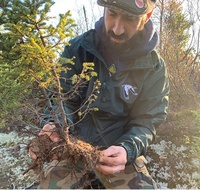
JPH- Member
 Re: Picea Mariana (Black Spruce) and Larix Laricina (Tamarack) Collected Fall 2021. SPRING UPDATE *Larix pushing new needles!*
Re: Picea Mariana (Black Spruce) and Larix Laricina (Tamarack) Collected Fall 2021. SPRING UPDATE *Larix pushing new needles!*
Cool Tundra material  Keep us posted
Keep us posted
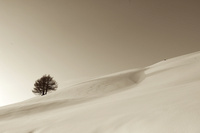
Thomas Urban- Member
 Re: Picea Mariana (Black Spruce) and Larix Laricina (Tamarack) Collected Fall 2021. SPRING UPDATE *Larix pushing new needles!*
Re: Picea Mariana (Black Spruce) and Larix Laricina (Tamarack) Collected Fall 2021. SPRING UPDATE *Larix pushing new needles!*
Happy you have managed to really start your bonsai journey.
A lot of character of your trees. Cabinet quality of your wooden boxes:). Like it all very much. You that the passion that drives the results.
Interested to know what kind of other trees you can collect in your region. Poplar? Birches are great for bonsai in my region. Pines? Any kind of shrubs that could be used in bonsai?
A lot of character of your trees. Cabinet quality of your wooden boxes:). Like it all very much. You that the passion that drives the results.
Interested to know what kind of other trees you can collect in your region. Poplar? Birches are great for bonsai in my region. Pines? Any kind of shrubs that could be used in bonsai?
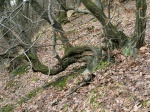
Vlad- Member
 Re: Picea Mariana (Black Spruce) and Larix Laricina (Tamarack) Collected Fall 2021. SPRING UPDATE *Larix pushing new needles!*
Re: Picea Mariana (Black Spruce) and Larix Laricina (Tamarack) Collected Fall 2021. SPRING UPDATE *Larix pushing new needles!*
Thanks everyone. I'm anxiously awaiting spring.
I appreciate the kind words, and I'm happy to see others appreciate these little wild trees! As for local species, I've seen many suited for bonsai! Here are some I've personally observed.
Evergreen Conifers: Jack Pine (Pinus Banksiana), Black Spruce (Picea Mariana). The spruces tend to grow in the lowlands and swamps. Anywhere wet. For pines you need to get up to higher ground where it's dryer.
Deciduous Conifers: Tamarack (Larix Laricina). These guys grow in the lowlands alongside the spruce, but are less dominant.
Broadleaved Deciduous: Quaking Aspen (Populus Tremuloides), Speckled Alder (Alnus Rugosa), Paper Birch (Betula Papyrifera), Pussy Willow (Salix Discolor), and Balsam Willow (Salix Pyrifolia). The Aspens are the only ones that grow tall. The rest can manage shrubby growth. No maples.
We also have a species of Rhododendron that's known locally as "Labrador Tea" (Rhododendron Groenlandicum). I see tons of old gnarly examples when I'm out exploring. I think maybe it would be better suited for accent plantings. I'm also fairly certain they are ericaceous, so they might not be good to plant with something else.
I'm also glad you like the grow boxes. They are made of scrap wood I had laying around. I have a few pallets outside I found at the dump that I'm going to upcycle into new planters in the next little while.
I'll keep you posted as I add new trees to the family. I'll also post their progressions. If any die I'll post that too...
Until next time!
I appreciate the kind words, and I'm happy to see others appreciate these little wild trees! As for local species, I've seen many suited for bonsai! Here are some I've personally observed.
Evergreen Conifers: Jack Pine (Pinus Banksiana), Black Spruce (Picea Mariana). The spruces tend to grow in the lowlands and swamps. Anywhere wet. For pines you need to get up to higher ground where it's dryer.
Deciduous Conifers: Tamarack (Larix Laricina). These guys grow in the lowlands alongside the spruce, but are less dominant.
Broadleaved Deciduous: Quaking Aspen (Populus Tremuloides), Speckled Alder (Alnus Rugosa), Paper Birch (Betula Papyrifera), Pussy Willow (Salix Discolor), and Balsam Willow (Salix Pyrifolia). The Aspens are the only ones that grow tall. The rest can manage shrubby growth. No maples.
We also have a species of Rhododendron that's known locally as "Labrador Tea" (Rhododendron Groenlandicum). I see tons of old gnarly examples when I'm out exploring. I think maybe it would be better suited for accent plantings. I'm also fairly certain they are ericaceous, so they might not be good to plant with something else.
I'm also glad you like the grow boxes. They are made of scrap wood I had laying around. I have a few pallets outside I found at the dump that I'm going to upcycle into new planters in the next little while.
I'll keep you posted as I add new trees to the family. I'll also post their progressions. If any die I'll post that too...

Until next time!

JPH- Member
Vlad likes this post
 Spring update!
Spring update!
Things have FINALLY thawed out enough here in the subarctic for my trees to be moved out of their shelter. I learned a lot from the experience and I will be building them a proper cold frame for the next winter season. I was so concerned with sheltering them from the wind, that I forgot to place them in an area where the sun would help the snow melt. The result was me having to dig them out and chip away at ice buildup around the grow boxes (this was more labour intensive than actually digging the trees in the first place!).
They all seem relatively healthy. Some yellowing on some interior needles but I expected that. I'm fairly confident that they survived but I'll know for sure in the next few weeks if/when they start to push out their spring flush. The larger trees have not been watered yet, as their substrate is still pretty damp from the snow melt. The smaller ones got their first watering today as they were on the dry side. The temperature shouldn't fall below 0 degrees at night... But if it does I'll just place them on the ground.
I took some proper photographs today do document their progress.

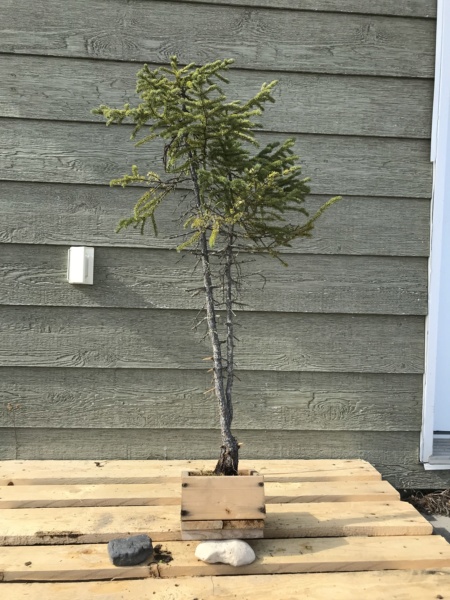

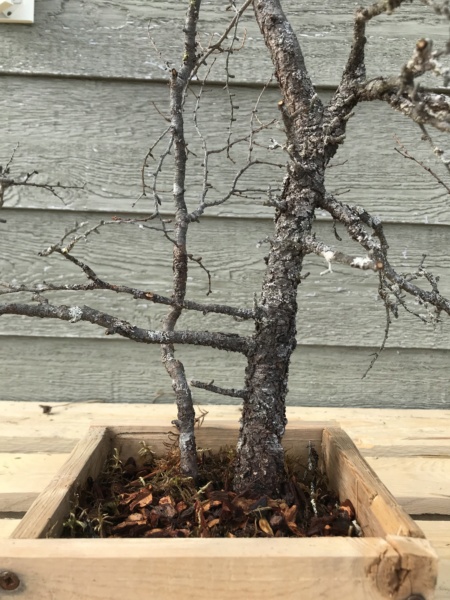
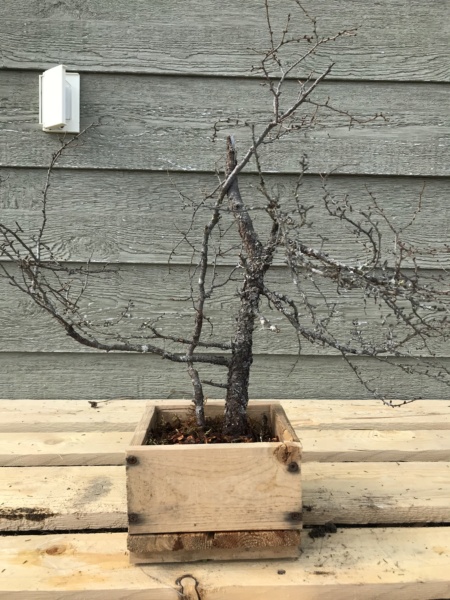

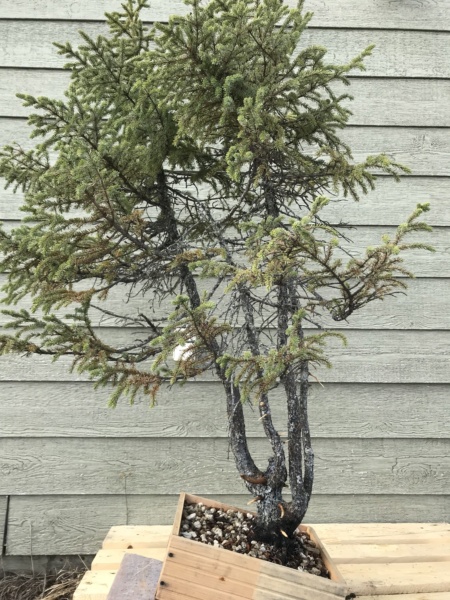
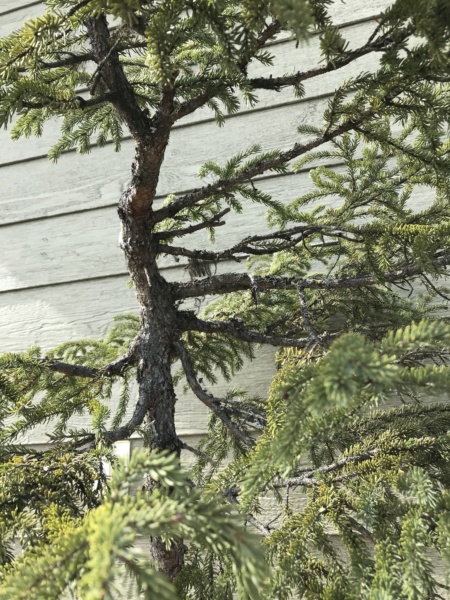
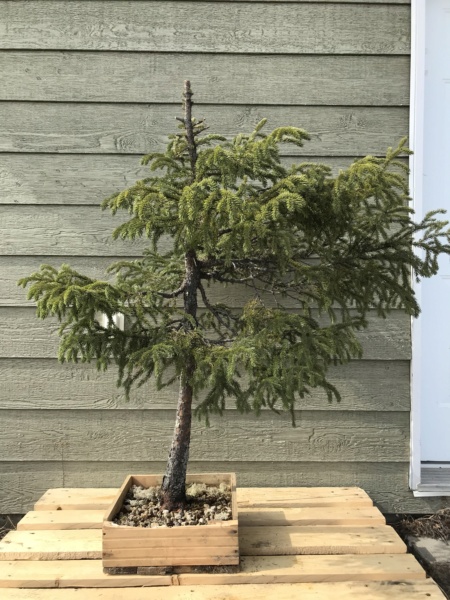
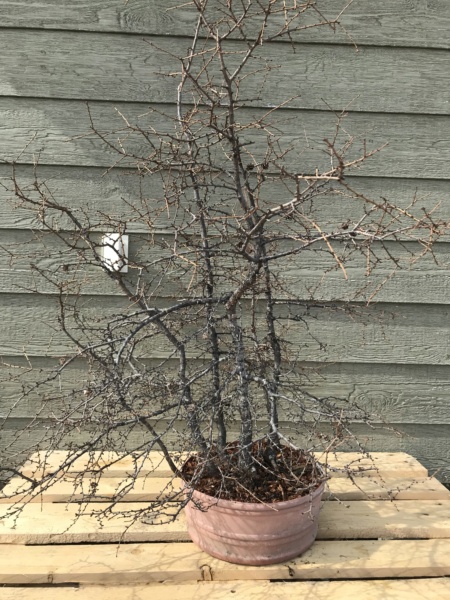
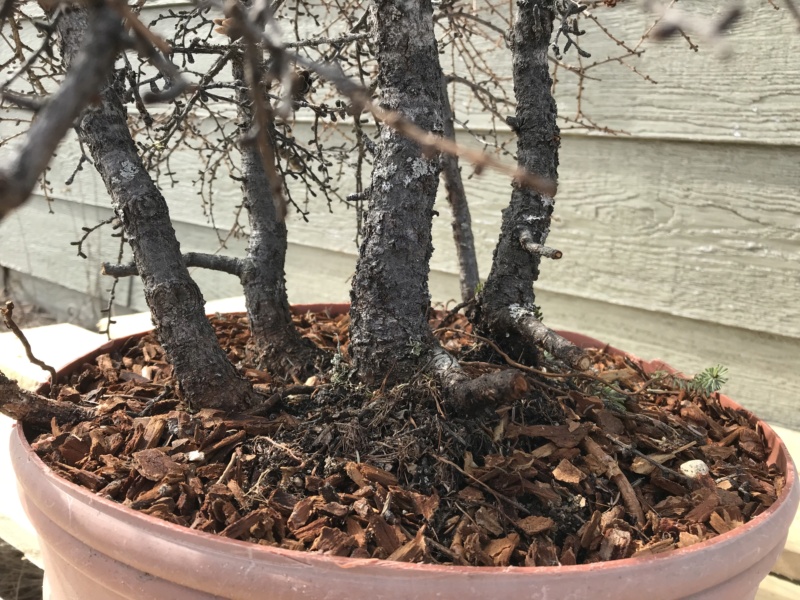
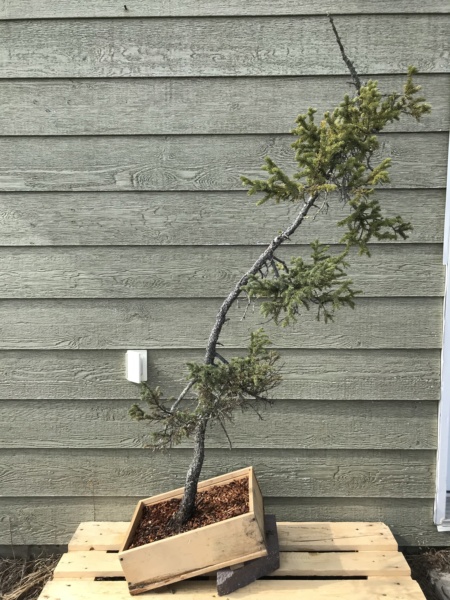
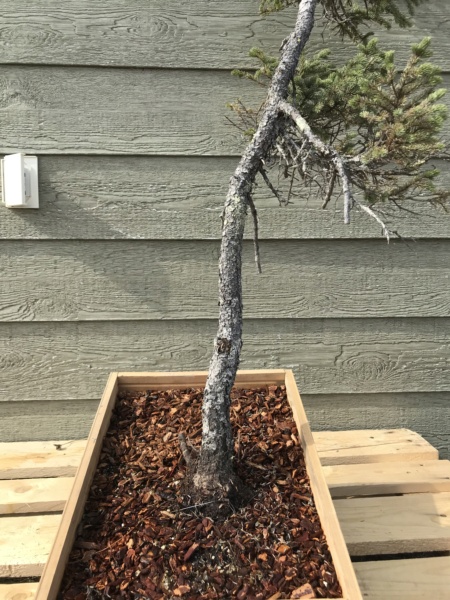
As usual I'll keep this thread updated for better or worse! Until next time!
They all seem relatively healthy. Some yellowing on some interior needles but I expected that. I'm fairly confident that they survived but I'll know for sure in the next few weeks if/when they start to push out their spring flush. The larger trees have not been watered yet, as their substrate is still pretty damp from the snow melt. The smaller ones got their first watering today as they were on the dry side. The temperature shouldn't fall below 0 degrees at night... But if it does I'll just place them on the ground.
I took some proper photographs today do document their progress.













As usual I'll keep this thread updated for better or worse! Until next time!

JPH- Member
Thomas Urban likes this post
 Re: Picea Mariana (Black Spruce) and Larix Laricina (Tamarack) Collected Fall 2021. SPRING UPDATE *Larix pushing new needles!*
Re: Picea Mariana (Black Spruce) and Larix Laricina (Tamarack) Collected Fall 2021. SPRING UPDATE *Larix pushing new needles!*
Glad to hear that spring is finally arriving in your neck of the woods. Providing some sun during the winter is useful but avoid too much sun since you could get them going in February and then get a really cold freeze in March. If you decide to move towards more of a greenhouse here is how I built mine - it is in sections so it can be taken down in the summer. I use wood frames that are 1 x 1.2 m and 6 cm thick. The outer covering is 1 cm thick bubble wrap with the smooth surface inside covered by 0.15 mm thick clear (actually translucent white) ply film. Once it is assembled, I staple 0.018 mm thick poly on the inside and put tan shade cloth over most of the top. This combination does a nice job of providing light and moderating the temperature swings. In the past couple of years, I decided to heat it to just above freezing. A 1500 W heater on an Inkbird thermostat will keep it above 1C when the outside temperatures are above -12C. It is freestanding and about 3m by 7m and over 2m tall at the peak. I add a propane heater when it gets really cold. A final note is that the air temperature at 1 m is 1C, but the temperature at the ground is closer to 6C.
Marty Weiser- Member
JPH likes this post
 Re: Picea Mariana (Black Spruce) and Larix Laricina (Tamarack) Collected Fall 2021. SPRING UPDATE *Larix pushing new needles!*
Re: Picea Mariana (Black Spruce) and Larix Laricina (Tamarack) Collected Fall 2021. SPRING UPDATE *Larix pushing new needles!*
Thanks for the info on your overwintering solution Marty. Never thought to use bubble wrap but it makes sense now that I think about it!
Since I live in zone 1a/1b, the winters are absolutely brutal. -45°C in Jan/Feb is common and the wind is just crazy. There is also very little sun during winter since we are so far North. Sunrise is around 8:30/9:00am and it's dark again by 4:00pm (but the opposite is true for the Summer, and we get to enjoy extremely long days). This winter in particular was very long. Started early in October and there's still a good foot of snow in some places today (May 3rd). But the temps are finally stabilizing and it shouldn't get below 0° at night. All of my trees are local species which have been hardened in the wild without any protection so I'm pretty confident in their ability to adapt. But life in a container is different than life in the ground. So we'll see. For better or worse I'll keep you guys updated. And should any die, the very least I can do is try to learn from them.
I'm looking forward to collecting more trees this spring. I've already scouted out a few areas where the snow has melted. I'm just waiting for the ground to thaw enough to dig. My son is also looking forward to collecting a few smaller trees. "Baby trees" he calls them (he's only three).
My goal this spring is to get more Black Spruce (Picea Mariana), a few Jack Pines (Pinus Banksiana), more Tamarack (Larix Laricina), and some deciduous broadleaves. We have a lot of Speckled Alder (Alnus Rugosa) which have wonderful fine branching and tiny leaves. We also have many examples of different Willows. Paper Birch as well. But it's pretty rare to find them. If you guys are interested in seeing new trees I collect this year, I can post them here or in a new topic if you like.
If anyone has any questions, or would like more details about the environment here, I'd be happy to oblige.
Since I live in zone 1a/1b, the winters are absolutely brutal. -45°C in Jan/Feb is common and the wind is just crazy. There is also very little sun during winter since we are so far North. Sunrise is around 8:30/9:00am and it's dark again by 4:00pm (but the opposite is true for the Summer, and we get to enjoy extremely long days). This winter in particular was very long. Started early in October and there's still a good foot of snow in some places today (May 3rd). But the temps are finally stabilizing and it shouldn't get below 0° at night. All of my trees are local species which have been hardened in the wild without any protection so I'm pretty confident in their ability to adapt. But life in a container is different than life in the ground. So we'll see. For better or worse I'll keep you guys updated. And should any die, the very least I can do is try to learn from them.
I'm looking forward to collecting more trees this spring. I've already scouted out a few areas where the snow has melted. I'm just waiting for the ground to thaw enough to dig. My son is also looking forward to collecting a few smaller trees. "Baby trees" he calls them (he's only three).
My goal this spring is to get more Black Spruce (Picea Mariana), a few Jack Pines (Pinus Banksiana), more Tamarack (Larix Laricina), and some deciduous broadleaves. We have a lot of Speckled Alder (Alnus Rugosa) which have wonderful fine branching and tiny leaves. We also have many examples of different Willows. Paper Birch as well. But it's pretty rare to find them. If you guys are interested in seeing new trees I collect this year, I can post them here or in a new topic if you like.
If anyone has any questions, or would like more details about the environment here, I'd be happy to oblige.

JPH- Member
 Re: Picea Mariana (Black Spruce) and Larix Laricina (Tamarack) Collected Fall 2021. SPRING UPDATE *Larix pushing new needles!*
Re: Picea Mariana (Black Spruce) and Larix Laricina (Tamarack) Collected Fall 2021. SPRING UPDATE *Larix pushing new needles!*
Those are long, cold winters. One thing to keep in mind is that most trees are not nearly as cold hardy in a pot as in the ground since the ground keeps the roots much warmer, even in your climate. The difference is often 10 - 30C less hardy in a pot. For example, most larch can handle at least -50F/-45C in the ground, but often have issues below 0F/-18C in a pot on a bench.
Marty Weiser- Member
JPH likes this post
 Re: Picea Mariana (Black Spruce) and Larix Laricina (Tamarack) Collected Fall 2021. SPRING UPDATE *Larix pushing new needles!*
Re: Picea Mariana (Black Spruce) and Larix Laricina (Tamarack) Collected Fall 2021. SPRING UPDATE *Larix pushing new needles!*
Marty. You are absolutely right about cold hardiness in pots vs the ground. My trees remained on the ground, huddled together and covered in a thick layer of insulating snow from late fall up until about a week ago. The lowest nighttime temps have not fallen below -8°C since I dug them out (but that was only for one night). Most nights it stays around the -5°C to 0°C range... None of them are up on a bench yet. The grow boxes are all made of wood (with the exception of my Larix clump, which was an old plastic pot I had laying around). As such they shouldn't conduct heat/cold as much as ceramics, stone, or mica. After this Friday, we should be seeing consistent nighttime temperatures in the +5°C range. I'm fairly confident that they've survived. But time can make fools of us all, so I'm patiently waiting to see how they'll respond. If any didn't make it, I'll be sure to post about it.

JPH- Member
 Re: Picea Mariana (Black Spruce) and Larix Laricina (Tamarack) Collected Fall 2021. SPRING UPDATE *Larix pushing new needles!*
Re: Picea Mariana (Black Spruce) and Larix Laricina (Tamarack) Collected Fall 2021. SPRING UPDATE *Larix pushing new needles!*
Happy to report that my Tamaracks collected in the fall have started pushing their spring growth! They started about a week and a half ago. The clump in particular is really taking off! Very pleased to see they survived the winter.
The Spruces appear to be much slower to wake. Not really seeing signs that the trees are dying. Everything is staying flexible and green. No excessive shedding of needles. I wonder if the trees are using their stored energy reserves to repair roots instead of pushing new growth?
I also collected a new Spruce earlier in the week.
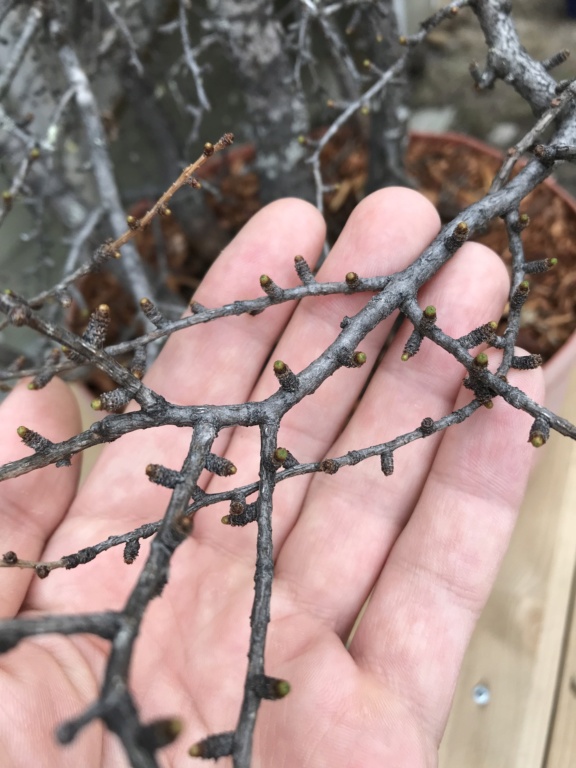
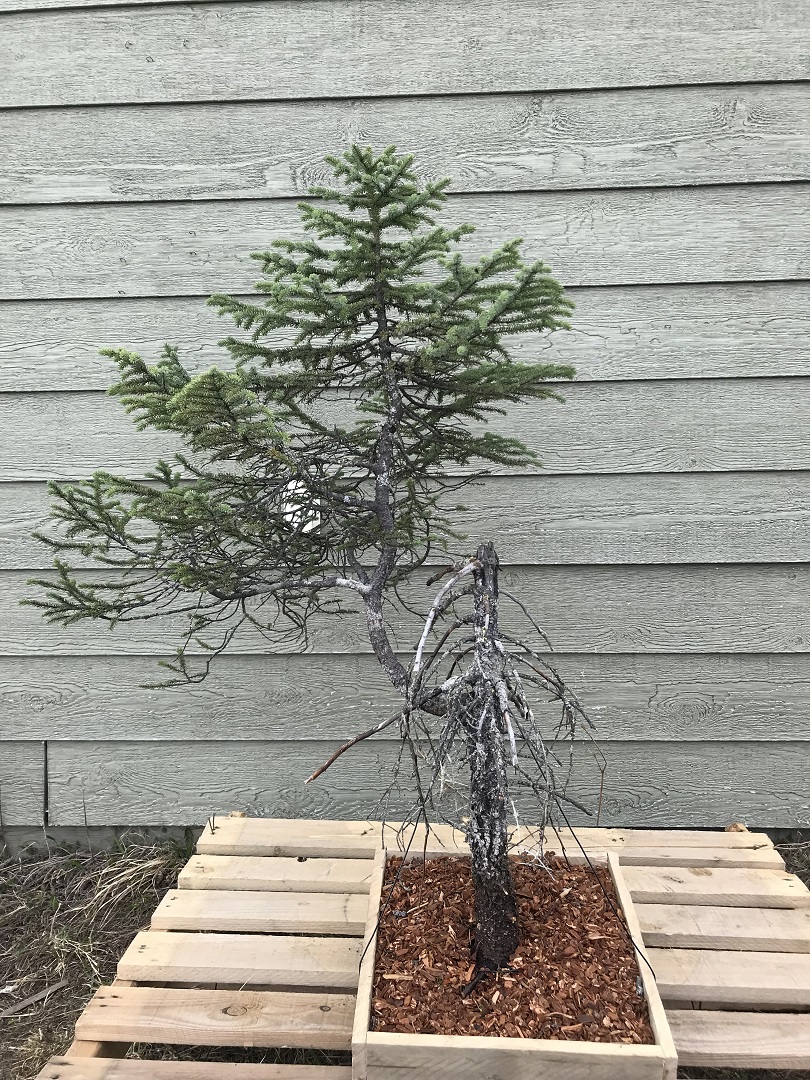
The Spruces appear to be much slower to wake. Not really seeing signs that the trees are dying. Everything is staying flexible and green. No excessive shedding of needles. I wonder if the trees are using their stored energy reserves to repair roots instead of pushing new growth?
I also collected a new Spruce earlier in the week.



JPH- Member
MrFancyPlants likes this post
 Similar topics
Similar topics» Black Spruce (Picea mariana)
» Larix forrest collected 2007
» Oregon collected Sitka spruce [Picea sitchensis]
» larix from poland
» larix fukinagashi
» Larix forrest collected 2007
» Oregon collected Sitka spruce [Picea sitchensis]
» larix from poland
» larix fukinagashi
Page 1 of 1
Permissions in this forum:
You cannot reply to topics in this forum






